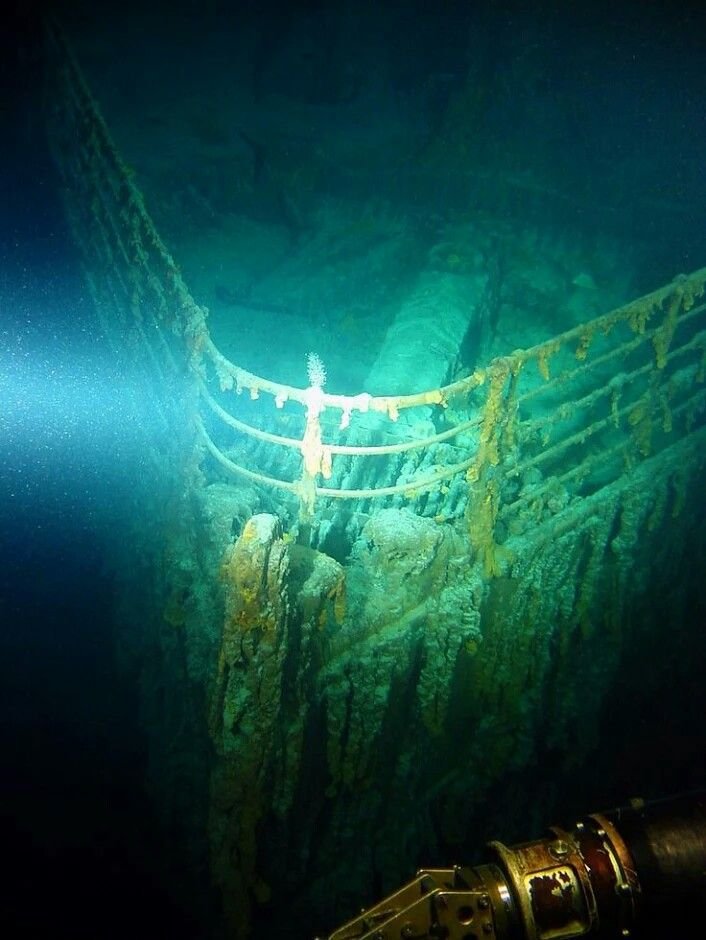A Century Later, the Titanic Still Captivates
More than a hundred years after its fateful maiden voyage, the RMS Titanic continues to fascinate historians, scientists, and the general public. Often remembered as one of the deadliest maritime disasters in history, the Titanic’s story is deeply etched in global memory. But now, newly revealed underwater footage is rewriting parts of that history, offering unprecedented clarity and insight into what really happened on that cold April night in 1912.
Captured using the latest submersible technology, the footage brings viewers face-to-face with never-before-seen sections of the shipwreck and exposes surprising new details about the Titanic’s final moments. It’s not just a visual marvel—it’s a significant piece of history coming to light.
The Legendary Voyage: A Quick Recap
Launched in 1912, the Titanic was hailed as the most luxurious and “unsinkable” ship of its time. Owned by the White Star Line and built by Harland and Wolff in Belfast, the Titanic featured opulent interiors, advanced engineering, and cutting-edge safety measures.
On April 10, 1912, the Titanic departed from Southampton, England, headed for New York City. On board were over 2,200 passengers and crew, including some of the wealthiest people of the era as well as hopeful immigrants.
Four days into the voyage, on the night of April 14, the Titanic struck an iceberg in the North Atlantic Ocean and sank in the early hours of April 15, killing more than 1,500 people. The tragedy sparked outrage, reforms in maritime safety, and an enduring cultural legacy.
The Discovery of the Wreck
The Titanic’s wreck was finally discovered in 1985 by a joint American-French expedition led by oceanographer Robert Ballard. The ship was located roughly 12,500 feet below the surface of the North Atlantic, about 370 miles off the coast of Newfoundland, Canada.
Since then, various missions have returned to the site, revealing haunting images of broken decks, rusted railings, and personal items scattered across the ocean floor. However, the recent release of new ultra-HD footage has unveiled parts of the Titanic never seen before—and it’s changing what we thought we knew.
The New Footage: A Deeper Look
Filmed during a 2024 expedition using advanced deep-sea submersibles and 8K cameras, the footage provides crystal-clear views of the ship’s stern, propellers, cargo hold, and lower-deck compartments.
Highlights of the new discovery include:
- A largely intact officer’s cabin previously buried under debris.
- A never-before-seen section of the second-class staircase, offering clues about the escape routes passengers may have used.
- Better-preserved artifacts, including brass light fixtures, china plates, and personal items.
- Unusual hull damage patterns that challenge prior theories about how the ship broke apart.
Forensic marine archaeologists are now reanalyzing the wreckage, trying to piece together a more accurate sequence of events during the sinking. The clarity of the footage also allows for virtual reconstructions that could give the public the most realistic tour of the Titanic ever created.
Shifting Theories: Did the Ship Break Apart Differently?
One of the major revelations sparked by the new footage concerns how the Titanic broke apart. Earlier theories suggested the ship split into two main pieces at or near the surface. But the latest visual evidence shows twisted metal sections and stress fractures that suggest the breakup may have occurred at a different angle—or even deeper under the surface—than previously believed.
These findings could explain inconsistencies in eyewitness reports from survivors and reshape how experts understand the sequence of events during the ship’s final minutes.
Faces from the Deep: Human Stories Resurface
The Titanic is not just a shipwreck—it’s a resting place for over 1,500 souls. The new footage, while respectful of the site, also brings back to light personal narratives lost to time.
One chilling scene shows a pair of leather shoes side-by-side in the sediment, believed to mark the position of a victim. Another reveals a pocket watch and eyeglasses lying near the remains of what was once a passenger’s bunk. These small items are haunting reminders of the individuals aboard, from wealthy tycoons to third-class passengers chasing new beginnings.
Marine archaeologists hope to identify more of these objects and use them to tell the personal stories that make the Titanic’s tragedy so profoundly human.
A Technological Triumph: How the Footage Was Captured
The expedition team used remotely operated vehicles (ROVs) equipped with robotic arms, sonar imaging, and 8K ultra-high-definition video cameras. These ROVs were capable of maneuvering through tight spaces and dark chambers while causing minimal disturbance to the fragile wreck.
AI-assisted navigation allowed researchers to map large sections of the site with never-before-seen accuracy. The team also used photogrammetry to create 3D digital models of the Titanic, which are now being used for educational platforms and historical archives.
This mission represents a leap forward in underwater archaeology and sets a new standard for deep-sea exploration.
Controversy and Ethics: Should We Be Filming the Titanic?
As with previous expeditions, the release of new Titanic footage has reignited ethical debates. Some believe the site should be left untouched out of respect, as it is essentially a mass grave. Others argue that careful documentation and scientific study are essential for preserving history.
The team behind the footage emphasized that the operation was non-invasive, with no artifacts removed and every step taken with cultural sensitivity. The mission was approved by international maritime authorities and conducted in collaboration with Titanic historians, oceanographers, and descendants of those who perished.
Educational and Cultural Impact
The new footage will be featured in museums, virtual reality experiences, and educational programs aimed at teaching future generations about the Titanic’s historical significance. A planned exhibition, titled Titanic Reimagined, will allow visitors to interact with life-sized digital models and explore the ship’s interior like never before.
In classrooms, the footage is being used to teach not only history but also oceanography, engineering, ethics, and storytelling. The Titanic’s enduring appeal lies in its intersection of human ambition, tragedy, and technological wonder.
Lessons from the Past: Modern Relevance of the Titanic
The Titanic’s story continues to hold relevance in today’s world. It serves as a sobering reminder of hubris, inequality, and the consequences of ignoring warnings. Many safety regulations and maritime laws today—such as mandatory lifeboat drills, ice patrols, and 24-hour radio operations—were implemented in response to the disaster.
As climate change increases iceberg drift and extreme weather conditions, some experts are calling for renewed attention to maritime safety protocols, especially for cruise liners and shipping vessels navigating the Arctic.
A Story That Lives On
The Titanic is more than a ship—it’s a story of innovation and failure, luxury and suffering, and ultimately, humanity. The new footage, unveiled over a century after the ship’s demise, shows us that history is never fully written. With each technological advance and deep-sea dive, we uncover more truths buried beneath the waves.
This visual treasure trove not only brings closure to lingering questions—it reawakens a timeless fascination with one of history’s greatest maritime mysteries. The untold story of the Titanic is far from over. It continues to unfold, layer by layer, in the silent depths of the Atlantic.


